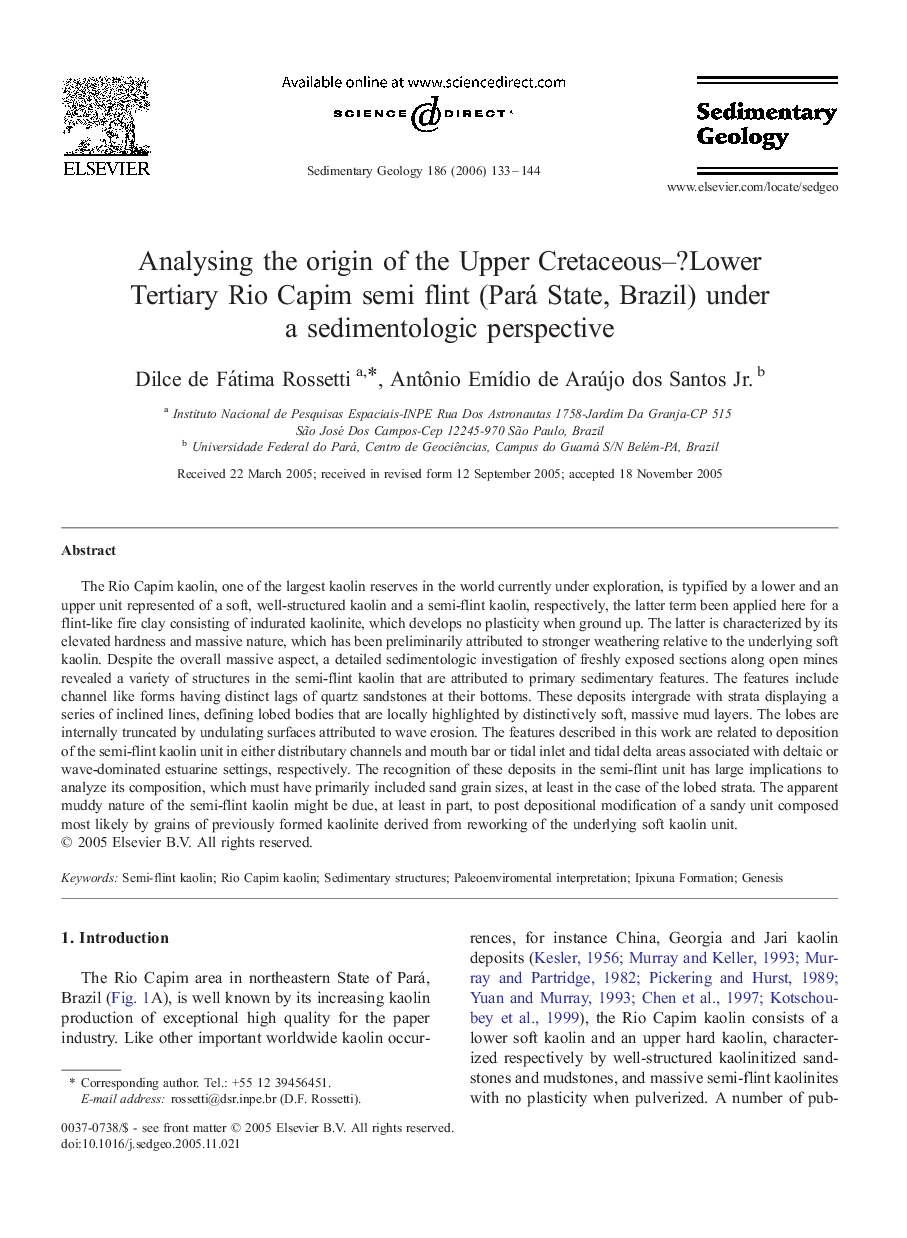| کد مقاله | کد نشریه | سال انتشار | مقاله انگلیسی | نسخه تمام متن |
|---|---|---|---|---|
| 4691041 | 1636188 | 2006 | 12 صفحه PDF | دانلود رایگان |
عنوان انگلیسی مقاله ISI
Analysing the origin of the Upper Cretaceous-?Lower Tertiary Rio Capim semi flint (Pará State, Brazil) under a sedimentologic perspective
دانلود مقاله + سفارش ترجمه
دانلود مقاله ISI انگلیسی
رایگان برای ایرانیان
موضوعات مرتبط
مهندسی و علوم پایه
علوم زمین و سیارات
فرآیندهای سطح زمین
پیش نمایش صفحه اول مقاله

چکیده انگلیسی
The Rio Capim kaolin, one of the largest kaolin reserves in the world currently under exploration, is typified by a lower and an upper unit represented of a soft, well-structured kaolin and a semi-flint kaolin, respectively, the latter term been applied here for a flint-like fire clay consisting of indurated kaolinite, which develops no plasticity when ground up. The latter is characterized by its elevated hardness and massive nature, which has been preliminarily attributed to stronger weathering relative to the underlying soft kaolin. Despite the overall massive aspect, a detailed sedimentologic investigation of freshly exposed sections along open mines revealed a variety of structures in the semi-flint kaolin that are attributed to primary sedimentary features. The features include channel like forms having distinct lags of quartz sandstones at their bottoms. These deposits intergrade with strata displaying a series of inclined lines, defining lobed bodies that are locally highlighted by distinctively soft, massive mud layers. The lobes are internally truncated by undulating surfaces attributed to wave erosion. The features described in this work are related to deposition of the semi-flint kaolin unit in either distributary channels and mouth bar or tidal inlet and tidal delta areas associated with deltaic or wave-dominated estuarine settings, respectively. The recognition of these deposits in the semi-flint unit has large implications to analyze its composition, which must have primarily included sand grain sizes, at least in the case of the lobed strata. The apparent muddy nature of the semi-flint kaolin might be due, at least in part, to post depositional modification of a sandy unit composed most likely by grains of previously formed kaolinite derived from reworking of the underlying soft kaolin unit.
ناشر
Database: Elsevier - ScienceDirect (ساینس دایرکت)
Journal: Sedimentary Geology - Volume 186, Issues 1â2, 15 April 2006, Pages 133-144
Journal: Sedimentary Geology - Volume 186, Issues 1â2, 15 April 2006, Pages 133-144
نویسندگان
Dilce de Fatima Rossetti, Antônio EmÃdio de Araújo dos Jr.,